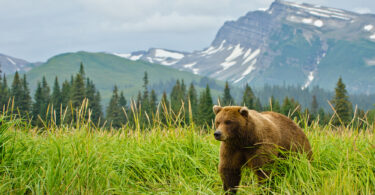This blog post was updated on September 6, 2024.
Oktoberfest is an annual celebration in Munich that draws millions of visitors from all around the world. Taking place in September and October, this iconic festival is famous for its lively atmosphere, longstanding traditions, and, of course, delicious Bavarian beer.
It’s not just about the beer, though. Whether you’re a first-timer or a seasoned attendee, Oktoberfest offers something for everyone, from thrilling amusement rides to mouthwatering culinary treats. This festival is a full-blown cultural experience with parades, traditional dances, and even a flea circus.
So, grab your dirndl or lederhosen, and get ready to dive into one of the most exhilarating events on the global calendar. Here are just a few must-do activities to ensure your Oktoberfest experience in Munich is unforgettable!
Watch the Parade on the First Day

Oktoberfest’s opening day parade
The parade is more than just a spectacular sight—it’s a cherished tradition that has been part of Oktoberfest since 1887, marking the official start of the celebrations. Every year, this time-honored event kicks off the festival with vibrant colors, lively music, and plenty of excitement. The parade typically begins in the late morning and lasts for a couple of hours, leading right into the famous “O’zapft is!” ceremony, where the first keg of beer is tapped to signal the official opening of the festivities. Check the schedule in advance for specific times.
Check out the Amusement Rides

Hula Hoop Dirndl Girls – Teufelsrad – Oktoberfest by JaBB licensed under CC BY-NC-ND 2.0
If you want a rush of adrenaline at Oktoberfest, hop aboard one of the amusement rides. The most infamous one is the aptly named Olympia Looping. Picture the Olympic rings in your mind, and that’s exactly what you’ll see with a lot of gravity-defying loops. Once the sun starts to set, make a beeline for the Ferris wheel to get the best seats in the house.
The Teufelsrad is the oldest ride at Oktoberfest, Munich – it was introduced to the festival in the 1910s, and it’s an endless source of entertainment for bystanders and riders. Imagine a large spinning wooden disk, tilted slightly at an angle, with participants trying to stay on as it picks up speed. The challenge comes when centrifugal force tries to fling riders off, while playful staff members use padded bags to nudge them off balance. It’s a hilarious spectacle for both riders and the crowd.
Watch the Traditional Costume and Riflemen’s Parade

Trachten- und Schützenumzug in München by Usien licensed under CC BY-SA 3.0
One of the biggest moments of Munich’s Oktoberfest is the Traditional Costume and Riflemen’s Parade. A fixture of the city’s celebrations since 1950, the parade takes place on the first Sunday of Oktoberfest and is an event marked by amazing music, beautiful costumes, and unabashed revelry. Attracting upwards of 9,000 marchers each year, the parade takes a 7-kilometer jaunt down the historic avenue of Maximilianstraße to the Oktoberfest fairgrounds at Theresienwiese.
The procession is led each year by a young woman dressed up as the Münchner Kindl, the city’s mascot, who welcomes visitors to the festivities. The Münchner Kindl is followed by members of the Munich City Council and revelers adorned in traditional Bavarian vestments and historic German costumes. Paradegoers can look forward to seeing participants dressed in in all manner of colorful attire, including medieval knights on horseback. Meanwhile, local breweries decorate floats for the parade, showcasing the creative side of the city’s best beermakers. The parade is rounded out with scores of marching bands and drummers, who treat guests to the toe-tapping classics of Germany.
Attend Dance and Musical Performances

Oktoberfest folk dance
When there’s beer and food, there’s sure to be singing and dancing to keep the party going strong. Each tent has its own live band, playing everything from traditional Bavarian folk music and oompah tunes to popular sing-along classics and modern hits. The performances often include brass bands, accordion players, and lively singers who know how to get the crowd on their feet. If you’re feeling the rhythm, don’t be shy—get up on the bench and dance like nobody’s watching! Just remember, standing on the tables is a big no-no. It’s a surefire way to get shown the door.
For a special treat, don’t miss the closing ceremony. Join in with fellow festival-goers, light up some sparklers, and sing your heart out alongside locals and tourists alike, all while sipping on a refreshing Hacker-Pschorr. Expect the bands to wrap up the night with sentimental tunes like “Ein Prosit” and other beloved Oktoberfest anthems, making it a truly unforgettable end to the day.
Sample German Food

Schweinshaxe roasted ham
While Oktoberfest is best known for its beer, the festival is also a paradise for foodies looking to indulge in hearty German cuisine. The culinary offerings range from savory pork dishes and traditional sausages to irresistible pretzels and decadent desserts, all perfectly paired with a cold beer.
One of the standout dishes is Schweinshaxe, a crispy roasted pork knuckle served with rich gravy and a side of sauerkraut or fried potatoes. For sausage lovers, bratwurst is a must-try—grilled to perfection and typically served with mustard and sauerkraut on a crusty Kaiser roll. Weisswurst, a delicate veal and pork sausage, is another classic, often served with sweet mustard and pretzels.
Speaking of pretzels, Oktoberfest’s giant versions are a crowd favorite. These massive, freshly baked pretzels, dusted with salt, are a perfect snack to enjoy alongside your beer. For something sweeter, don’t miss the Apfelstrudel, a flaky pastry filled with spiced apples, raisins, and cinnamon, often served with vanilla sauce or whipped cream.
Watch the Flea Circus on Family Day

Alberti Flea Circus by Barbara Hobbs licensed under CC BY 2.0
Believe it or not, Oktoberfest features a traditional flea circus, an amusing and theatrical display in which tiny “fleas” seem to pull miniature wagons and perform other tricks in an enclosed space. It’s all a clever optical illusion, relying on hidden mechanisms and sleight of hand to create the impression of performing fleas. While the fleas aren’t real, the spectacle certainly draws a crowd with its playful charm and old-world entertainment. And if that’s not your thing, you can check out the bustling food market and bring your kids along for the family-friendly rides such as Poseidon (a thrilling water log ride) and Heidi (a gentle, slow roller coaster).
Check out the Different Tents

With 14 massive tents scattered throughout the grounds, Oktoberfest offers a variety of experiences, each with its own atmosphere, food, and entertainment. The tents are primarily run by large breweries, families, or companies with long-standing ties to the festival, many of which have been involved for generations. These operators are responsible for every detail, from the décor to the menu and live entertainment, creating distinctive environments within each tent.
The history of the tents dates back to the early 19th century when local breweries and vendors set up beer halls and food stands to serve festivalgoers. Over time, these evolved into the large, elaborately decorated tents seen today, with major Munich breweries like Paulaner, Augustiner, and Hofbräu playing a central role in their operation. Each tent showcases the operator’s identity, blending tradition with modern touches to enhance the festival experience.
Tables fill up quickly, so planning ahead or making reservations is key, especially for large groups. Hacker-Festhalle is often recommended, as it features a convertible roof that opens in good weather, and a ceiling painted like a bright blue sky with clouds. Paulaner Festzelt is the largest tent, with a capacity of 11,000, easily spotted thanks to its giant rotating beer stein. As the night goes on, many festivalgoers head to Käfer for a more intimate evening, though the number of tents operating after dark reduces from 14 to just 1, so don’t wait until the last minute.
You Might Also Enjoy: Prost! The Coolest Breweries That You Can Visit & Tour in Germany
Take a Break at the Beer Garden

Couple drinking at a traditional beer hall
As you go about enjoying the lively atmosphere and attractions of Oktoberfest, remember to step outside of the festival’s fairgrounds and experience the rich culture and history of the city of Munich. Among the must-see destinations in the city is the Augustiner-Keller Beer Garden, one of Munich’s best spots to sit down and relax after a long day. The city’s oldest and largest beer garden, Augustiner-Keller has delighted visitors since 1812. Guests of Augustiner-Keller can sample tasty Bavarian dishes paired with amazing glasses of craft beer from the restaurant’s own brewery.
A fine example of Bavarian beer culture, the Augustiner-Keller Beer Garden boasts elegant hardwood tables and communal seating, letting visitors to the city mingle with the bar’s regular patrons. A favorite spot to catch a live music performance, the beer garden is situated in a grove of chestnut trees that add to the establishment’s natural ambiance. Perfect for a quick lunch or a big dinner, the place also has seating indoors if you happen to be visiting the city on a rainy day.
FAQs:
Q: When does Oktoberfest usually start and end?
A: Oktoberfest typically begins in mid-September and ends on the first Sunday in October. If the first Sunday falls on October 1st or 2nd, the festival is extended until October 3rd to coincide with German Unity Day. This gives the festival a duration of 16 to 18 days, depending on the year.
Q: How much does it cost to enter Oktoberfest?
A: Entry to the Oktoberfest grounds is free, but you’ll pay for everything inside, including food, drinks, rides, and games. If you’re part of a large group, it’s a good idea to make table reservations in certain tents, which may require a deposit.
Q: What are the best times to visit to avoid large crowds?
A: Weekday mornings and early afternoons are the best times to avoid heavy crowds. The first Sunday and the final weekend are typically the busiest, so plan accordingly if you prefer a more relaxed experience.
Q: Can I bring my own food and drinks into the festival?
A: No, outside food and drinks are not allowed on the festival grounds. Luckily, there are numerous food stalls and tents offering everything from traditional Bavarian fare to snacks and drinks, so you’ll have plenty of choices inside.
Q: Are there lockers or storage options at Oktoberfest?
A: Yes, lockers are available around the festival grounds for a small fee. These are perfect for storing bags, jackets, or other belongings while you enjoy the festivities.
Q: Is Oktoberfest family-friendly?
A: Absolutely. There are designated Family Days with discounts on rides and attractions, and areas like Oide Wiesn, which feature historical rides and a quieter atmosphere, are especially suitable for children and families.
Q: What’s the best way to get to Oktoberfest?
A: Public transportation is your best bet. Munich’s U-Bahn, S-Bahn, and trams all stop at or near the festival grounds at Theresienwiese. Parking is very limited, so avoid driving if possible.
If you’ve gone to Oktoberfest in the past, feel free to share all the must-sees in the comment section below!







Leave a Comment